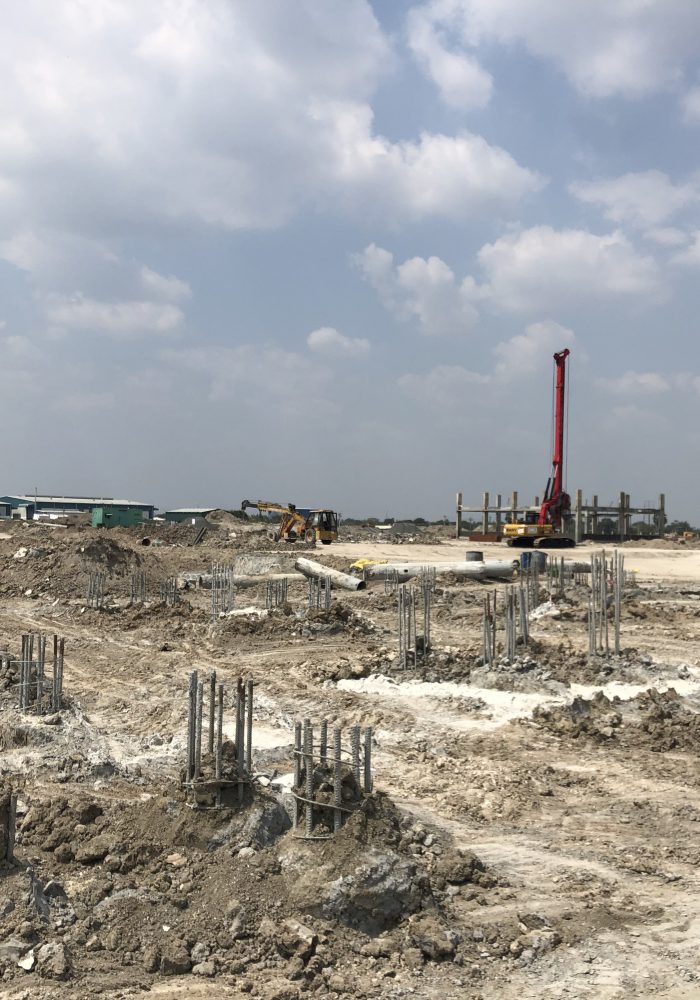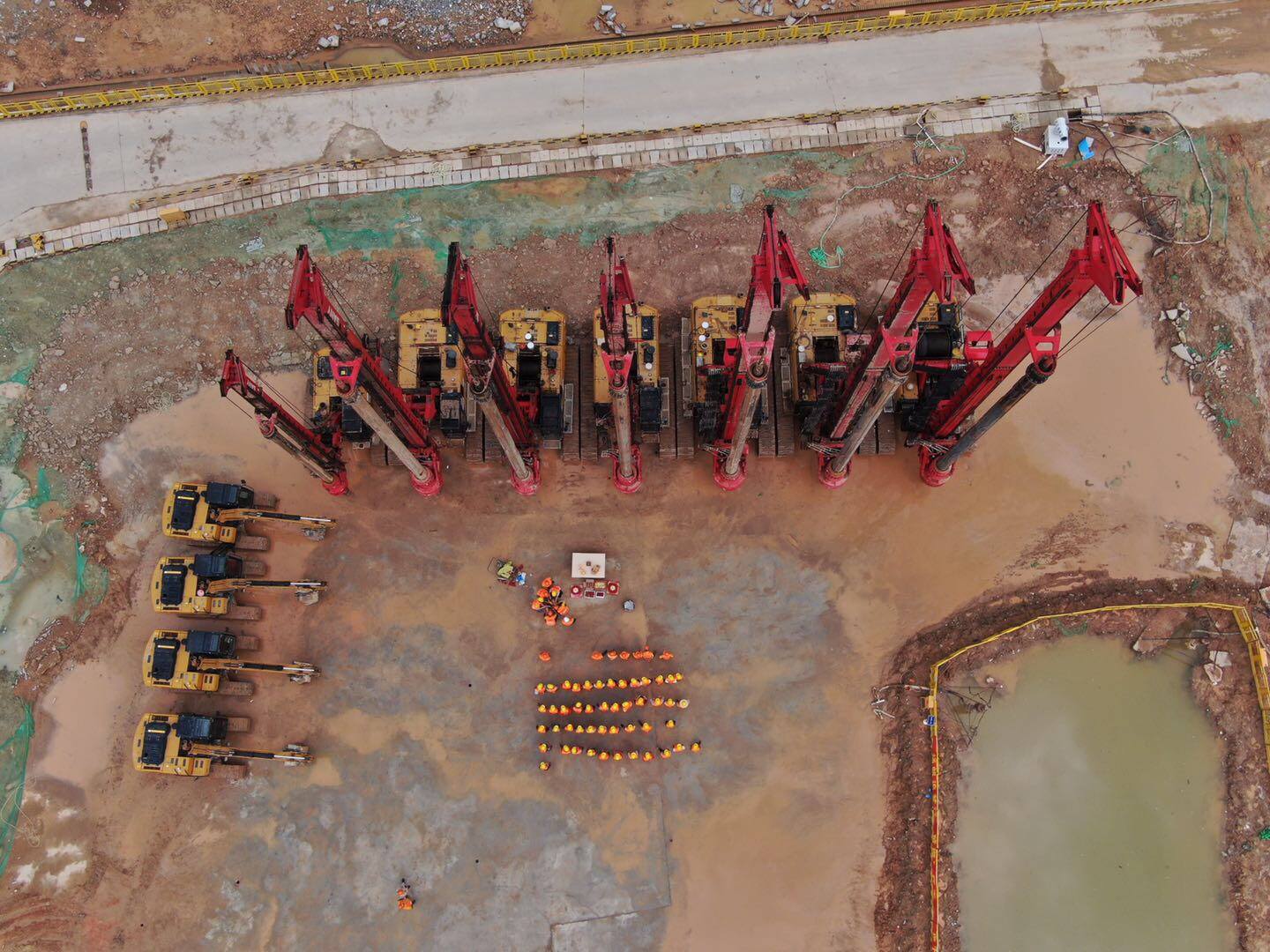
Pile foundations are structural elements that transfer loads through weak, compressible soils to underlying competent soils or rock. Whether an open site or inside an existing structure, Ground Infra can provide the optimal deep foundation solution for your project.
Bored piling is a method that involves boring a circular hole into the ground, installing steel reinforcement and filling the bore hole with concrete to form a pile. Boring is carried out to the required depth by means of either a crawler crane-mounted rotary boring unit or a purpose-built hydraulic drilling machine. Bored pile foundations are suitable for all types of soil conditions and compared with conventional driven piling methods, bored piling activities generate less noise and vibration. Static load tests are used to verify the capacity of bored piles. The most common reaction frame is the kentledge system. Also used are reaction piles, to provide tensile resistance. Conventional static load tests provide valuable data regarding the actual capacity of the installed piles, the corresponding design assumptions, and the distribution of load along the length of the pile.
Micropiles are a deep foundation element constructed using high-strength, small-diameter steel casing and/or threaded bar.
Micropiles are also known as minipiles, pin piles, needle piles, and root piles. The micropile casing generally has a diameter in the range of 3 to 10 inches. Typically, the casing is advanced to the design depth using a drilling technique. Reinforcing steel, typically an all-thread bar, is inserted into the micropile casing. High-strength cement grout is then pumped into the casing. The casing may extend to the full depth or end above the bond zone with the reinforcing bar extending to the full depth.
This technique has been used to support most types of structures. micropile drill rigs allow installation in restricted access and low headroom interiors, allowing facility upgrades with minimal disruption to normal operations.
Secant or tangent piles are columns constructed adjacent (tangent) or overlapping (secant) to form structural or cut-off walls. From soil mixing to drilled shafts, Ground Infra draws on its complete suite of techniques to optimize the design and construction of these walls.
The columns are constructed using soil mixing, jet grouting, augercast, or drilled shaft methods. Sequenced construction of the elements helps ensure a tight seal for water cut off. The design can incorporate steel bar or beams for reinforcement. Anchors provide additional lateral support, if needed. Secant or tangent pile walls can be constructed in a wide variety of soil conditions, including through cobbles and boulders.
